Lessons Learned Review Conference
Holy See Initiative in Response
to the Outbreak of Ebola Virus Disease in West Africa
and
Strategic Planning on Catholic Church Response
to Emerging Epidemics, including Zika
Hotel il Cantico — Rome, 9-10 December 2016
The Conference was opened with a video-reflection on the expression of urgent concern and solidarity issued by Pope Francis during the height of the outbreak:
“In the face of the worsening Ebola epidemic, I would hire to express my deep concern about this relentless disease that i s spreading especially on the African continent, especially among the more disadvantaged groups. I am dose with love and prayer to those stricken, as well as to the doctors, nurses, volunteers, religious institutes and associations, who are working heroically to help our sick brothers and sisters. I renew my appeal that the International Community exert all necessary effort to weaken this virus, effectively alleviating the hardship and suffering of all those so sorely tried. I invite you to pray for them and for those who have lost their lives.”‘
The main objectives of the Conference were to share positive experiences and challenges encountered during the implementation of the Holy See Initiative and of additional efforts, at national and local levels, by Catholic Church-inspired and other faith-based organizations. Participants also proposed “lessons learned” that could be of assistance in dealing with the current
challenges of responding to Zika, future outbreaks of Ebola, or of other major public health emergencies. The meeting convened 30 professionals, including those who were directly engaged as implementers or coordinators of programmes in the Ebola-affected countries, as well as members of the hierarchy, Curial officials of the Holy See, and funders of programmes described above. Moreover, public health experts from World Health Organization and other global public health agencies participated in the discussion and interchange.
His Eminence Peter K.A. Turkson welcomed the participants and described the initiative that had been developed in response to a specific mandate of Pope Francis, who also offered a significant amount of funding to support efforts to strengthen Church-based health care, socio-pastoral care, community-based responses, and Catholic education in order to continue these important services to affected populations, to eliminate the further transmission of Ebola and other infectious diseases and to ensure safe and sustainable environment with churches and related institutions. He also detailed the engagement in the Holy See initiative, through financial support and/or technical assistance by both international and local Church partners.2
Most importantly, those representatives of Catholic Church-related organizations in the affected countries shared the “lessons learned” from those closest to the outbreak. In addition, experts from public health agencies, such as World Health Organization, UNAIDS, the International Organization for Migration, and the Centers for Disease Control of the United States of America offered overviews of the outbreak of Ebola Virus Disease in West Africa, between 2014 and 2016, and projected other outbreaks of this or other life-threatening infectious diseases. Moreover, Caritas Internationalis reported on the Humanitarian Response coordinated on behalf of its extensive network of 165 national member organizations.
The major points and challenges that were highlighted included the following
- Central to the Church response is the sacredness and dignity of the human person, the rootedness of the Church in local communities, and its commitment to the Gospel mandate of.Jesus which is centered on the needs of the most poor and vulnerable.
- As in most ravaging epidemics, the greatest impact of the Ebola Virus Disease (EVD) in West Africa was felt by the most vulnerable populations and by those women (wives, mothers, grandmothers) and health professionals, including Religious Priests, Brothers, and Sisters and personnel of Catholic Church-inspired institutions, who cared for those who became infected.
- WHO reported that the three countries of Guinea, Liberia and Sierra Leone were the most heavily affected; in total, some 10 countries on 3 continents were affected. More than 11,000 people lost their lives. Borders between the three affected countries officially were closed, even though this was not specifically recommended by WHO, although in reality people continue to pass these borders; most airlines terminated service to the most affected countries, and this caused severe shortages of supplies and other logistical challenges.
- International organizations, respective affected governments, and local communities were not prepared for this outbreak.
- There was a general Jack of trust in governmental structures, perhaps as a result of long-term war and armed conflict in Liberia, Sierra Leone, and some parts of Guinea.
- Local populations put much faith and hope in messages originating from clergy and other religious authorities, as well as from traditional leaders.
- Concentration of information and communication in English language left Guinea isolated.
- Lack of messaging in local languages left many rural and more isolated populations deprived of life-saving information and prevention measures.
- Most governmental health structures either closed or focused almost exclusively on Ebola Treatment Units; church-based health care and other private health care structures attempted to provide treatment to people affected by other illnesses (NOTE: it was observed that, in Guinea, even through the height of the epidemic, Ebola Virus Disease ranked only as the 18th most frequent cause of death.
- Challenges were posed to local health structures to recruit and retain local staff — as a result of the higher salaries and various incentives being offered by multi-lateral and large international non-governmental organizations.
- Infection Prevention and Control represented a serious challenge, since health structures lacked sufficient and sustainable supplies of PPE (Personal Prevention Equipment). Stock-outs continue to present a major challenge for the safety of personnel and patients; this highlights the need for promotion of local production of such materials.
- The underlying causes of spread and the impact of EVD extended far beyond the medical sphere — social vulnerability, Jack of access to basic services, poor social infrastructure, misinformation, poor communication, and Jack of understanding of local cultures exacerbated the problem.
Major lessons learned and proposed strategies:
1) “We know the value of the community-based approach” (Dr. Peter Graaf, WHO); at the same time, we encourage our bishops to be informed and be involved; We should maintain community involvement at all stages of health emergency preparedness and response.
2) Health care workers often forget the need to take prevention and control measures; we need drills and constant alerts about the possibility of another outbreak of Ebola or other life-threatening infections; infection control procedures (IPC) need to become a regular “attitude” and practice in the field;
IPC recommendations need to be tailored to local conditions and resources so that international recommendations are implemented in a relevant and achievable manner.
- Priests, religious, and lay leaders need to be better prepared to accompany people suffering from such illnesses; psychosocial skills building needs to be integrated into formation and ongoing education programmers.
- We need to address the psycho-social needs of health care and pastoral staff members.
- We in Church-inspired institutions and organizations need to learn how to work with each other and present a coordinated “face” and approach of the Church — this is the only way the broad range and deep engagement of the Catholic Church and other faith-based organizations will be understood, appreciated, and supported by the national, governmental, and international organizations;
Members of the hierarchy, superiors of religious congregations and lay ecclesial movements, and leadership of Catholic-inspired organizations should be willing to cede some of teir autonomy in order to promote a more coordinated approach.
- Coordination in health emergencies needs to be an essential component of our respective and collective responses since it avoids duplication of effort, competition, and facilitates a better and more effective use of resources at global, national, and local levels;
Episcopal Conferences might consider designation of a focal point organization to coordinate responses and then provide ongoing reports to the competent ecclesiastical authorities.
- Cross border zones were especially vulnerable; migration and human mobility management, including health aspects, is an important factor in responses to health emergencies;
Faith-based organizations are key stakeholders for social mobilization, including the task of surveillance at community level;
We need to be more sensitive to local cultures.
- Clear and well communicated preparedness and response plans are necessary and should be in place before health emergencies arise; Transparency, accountability, and ongoing exchange of information should be key components of our Church-inspired responses.
- Church related institutions and organizations need to be present and fully engage and participate in multilateral, regional, national, and local coordination mechanisms of governments, professional organizations, and other responsible groups in order to bring their unique perspectives, expertise, and experience to the planning and strategic tables overseeing and monitoring various responses to these emergencies;
We encourage the local Church and Church-inspired organizations to proactively participate in the submission of proposals to international organizations, without awaiting solicitation.
- Interface among global, regional, national and local health structures must be taken into account and promoted during responses to health emergencies; local contributions cannot be ignored — they are essential; in most cases, top-down approaches are not effective.
- The effective role of the media — both for negative and positive messaging must be recognized and utilized for the most positive results in health emergency coordination.
- Multi-lateral and international non-governmental organizations must collaborate with local, community-based efforts and capacities.
Ways Forward:
- We call upon the competent ecclesiastical authorities, at all levels, to develop and implement coordination plans for emergency preparedness and response, in accord with the principle of subsidiarity and in keeping with the lessons learned and strategies detailed above.
- We call upon participants in this Conference and all our colleagues who responded to the Ebola Epidemic in West Africa to inform respective competent ecclesiastical authorities and their constituencies, and other key stakeholders and partner organizations, about the lessons learned, proposed strategies, and ways forward developed during this gathering.
- We call upon multilateral organizations, specialized public health agencies, and national and local governments to engage with faith-based organizations in planning and implementing emergency preparedness and response and to provide adequate funding and resources, on a timely basis, to the degree of involvement assumed by faith-based organizations.
- We call upon Church-based and other media to disseminate the findings and recommendations that emerged from this gathering.



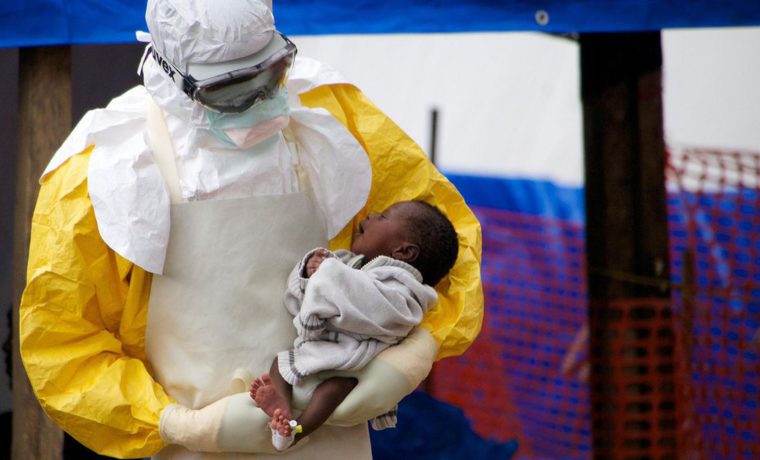
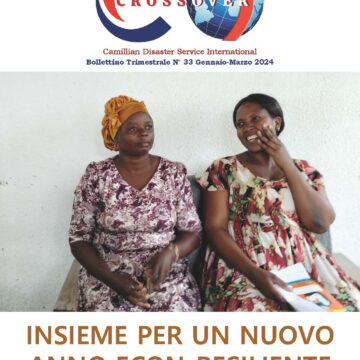

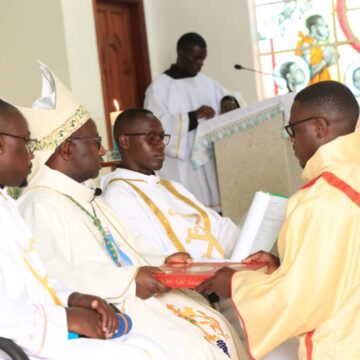


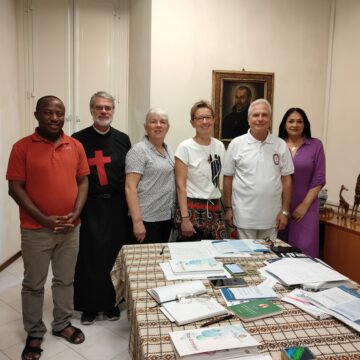

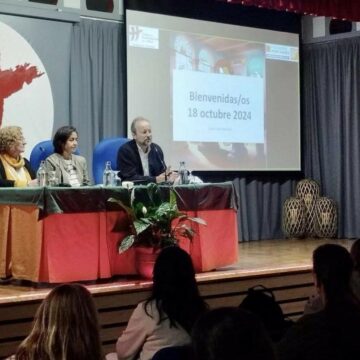
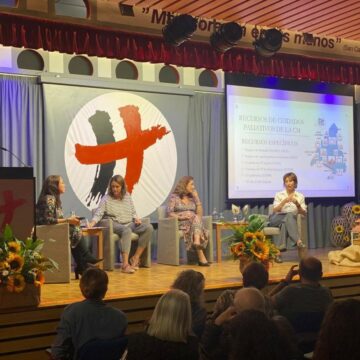
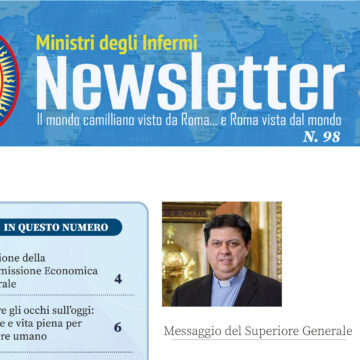
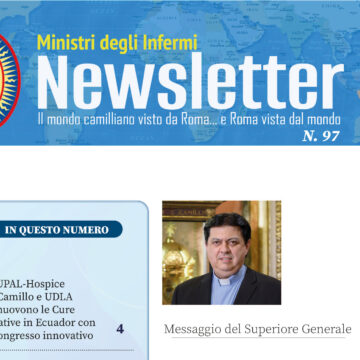
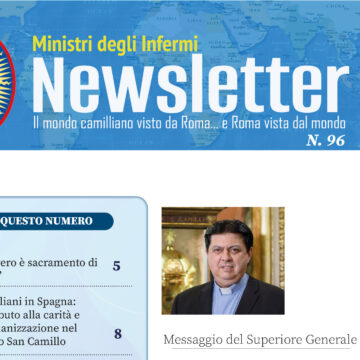
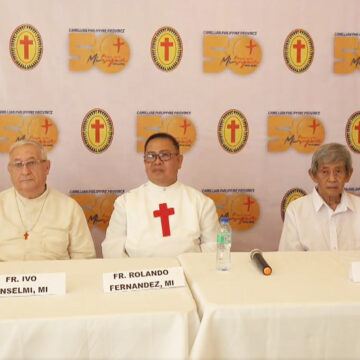
Camillians on Facebook
Camillians on Twitter
Camillians on Instagram